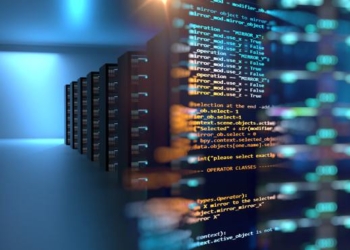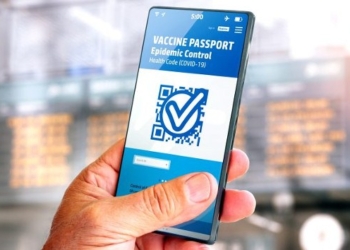
We, as parents always want the best for our kids; we want them to learn everything – right from crawling to driving – at the right time in the right manner. It’s 2019, today’s kids are more interested in being tech-savvy than to be an athlete; though gadgets are not that bad, the internet is also not just about p***, even growing up immersed in social media is not that threatening, if used appropriately. But we can’t ignore the growing vulnerabilities attached to it.
Kids are independence-seekers, naive, innocent, curious, fearful of being punished, easily influenced, in nature; these are the reasons they are way easier targets for both offline and online threat artists.
Saving a kid from a pick-pocket or bullies at a high school is easier, but what about those invisible culprits sitting everywhere in cyberspace, finding ways to blackmail, harras, bully, fraud, and whatnot to trap the young minds.
“The gap between Generation Y with X making it harder for parents to keep up with the tech. changes that are affecting their lil champs.”
We chauffeur our kids to school, to the playground, worry about their grades, try to serve them in the most perfect manner, but unfortunately, don’t take their online privacy and security seriously; who will take this responsibility? Do you know, computer viruses, identity theft, ransomware, cyberbullying and many other threats are affecting children every day.
Let’s take a look into a kids exposure to the so-called world of internet.
Your Kid and the Internet – An Inside out!
A study back in 2015, revealed that teens spend nearly nine hours using social media, while kids between 8 and 12 spend an average of six hours per day; what about yours? Find it out, not only hours but his/her online practices.
When your child is online, normal safeguards and security tips are not enough! You may think your kid is playing a game, researching a paper, or just typing a homework, so, how could he/she be harmed?
You are right to an extent, but what if, while playing a game, the child unknowingly click a malicious notification – reflecting a mesmerizing edition of their favorite game- or unintentionally delete your important file? There could more “what ifs,” the worst is when your child doesn’t realize what has happened and don’t share with you because of being punished.
Get to know them ASAP!
Is Your Kid at Risk While Online? These Figures might be of Help
If you think, malware, spyware, and other cyber attacks are adult-only, then you are wrong; anyone with a high level of trust and limited knowledge is hackers’ best target. The propensity of threats increases when kids and teens are active in chat rooms, video streaming, social-media surfing, and online gaming.
To play our part in the manner expected, we should know the internet consumption practices of our young minds; thanks to iamcybersafe for conducting a comprehensive internet usage survey among kids of grade 4-8.
Let’s see what the survey holds;
- 31% of kids download adult music.
- 21% watched adult programs.
- 29% of kids use the internet inappropriately (something their parents won’t approve.)
- 6% shopped online with a credit card without their parents’ consent.
- 2% searched for the adult content.
- 62% clicked to adult site after a search.
- 53% access the internet other than homework every day
- 31% lied about age to stream restricted content; isn’t a status offense?
The same study has also revealed that 40% of kids chatted to strangers online; let me brief how much information they have shared already.
- 53% of them revealed their contact details.
- 11% met a stranger personally.
- 15% tried to meet.
- 6% shared their address.
- 21% spoke on phone.
- 30% texted a stranger.
Does anyone want their kids to share any piece of information or even talk to strangers online?
Nobody wants any such thing to happen with their kids; it’s our duty to provide a safer and secure online freedom for protecting kid’s future, keeping them away from increasing risks and threats.
There are so many threats lurking for kids in cyberspace, right from bullying to ransomware, but the most credit goes to identity theft.
Just imagine, what if your kid is in foreclosure on a property in another state.
Your Kid’s Online Identity Holds his/her Future – So, Don’t Risk it!
Why I am saying this, you will understand with the results of a study “CHILD IDENTITY THEFT” conducted by Research Power; it was conducted back in 2011, but still relatable.
- 2% or 4,311 of the children in the report had their Social Security number used by others – it is 51 times higher than the rate for adults.
- The largest fraud of $725,000 was against a 16-year-old girl.
- The youngest victim was just five months old; 826 were between the ages of 6 to 10, 303 were under the age of five, 1212 were between the ages of 11 to 14, while 1849 were between 15 to 18 years of age.
This is not enough, even your kid’s identity can also be used to sell and purchase homes and automobiles, open credit card accounts, obtain a driver’s license, and for secure Employment.
You must be thinking how could an unused social security number be beneficial to hackers? Find the reasons below; you will be surprised!
What Happened with Unused Social Security Numbers?
Unused Social Security numbers are more valuable than one can think of, thieves pair them with any name and birth date; making it useful for illegal immigration and other organized crimes.
A child’s identity is blank with the least discoverability; since the child doesn't use it for an extended time and even parents also take it lightly, that’s why it becomes an easy target.
What happened then? This destroys a child’s ability to win loans approval, acquiring a phone, obtaining a job or else.
Anyways, kids need to be protected! But, how? That’s what I will tell you, don’t worry about that!
Hey Parents! Understand These Top Cybersecurity Concerns
For better understanding, I am dividing the measures in four different aspects, have a look.
1) Messaging, Where Hackers Wait for Their Targets
All the social media sites have direct message features that letting our kids to connect with friends, family, and strangers. Cybercriminals use such platforms, placing links that redirect to malicious downloads and phishing sites.
These are some signs that you can teach your kid to be aware of;
- Messages with unusual misspellings, typos, and/or oddly punctuated.
- Messages asking for personal information like credit card password or pin, SSNs, etc; legitimate social media sites never ask such things through direct message.
- Messages claiming your account will be blocked unless a specific action will be taken.
- Mismatched links, to check, keep the over a link with; make sure the bar address matches the destination.
You can also visit the sites like scam-detector and teach your lil champs some common ways how cybercriminals spread viruses via direct messaging.
2) Video Games – If It’s Online, It’s Dangerous
Can you spot a kid who doesn't love video games? You can’t; thanks to games for letting our lil warriors to share their experiences with others; there you will find a social component (chat or direct messaging).
Although this practice encourages game-build imaginations and relationships but also helping hackers to find their potential targets; don’t forget, there are 22 apps that are malware-loaded.
Playing games don’t infect systems; it’s only when our multi-taskers leave one game open and land on another.
Teach your kids to avoid such practices of hackers:
- Chat links or Pop-up ads – they often lure with avatars, skins, free coins, and even upgrades; once clicked, it leads to download an executable file. When you open, the malware program infects and steal data, that could be your credit information.
- Fake login pop-ups, asking username and password to continue; sometimes it could be “under maintenance” requests – a social engineering ploy to lock and steal kid’s profile.
- Fake ads, asking them to click for freebies; hackers use botnets to run a fraudulent ad scheme – more clicks, more money for hackers.
To avoid phishing scams while playing video games online, you need to empower kids with these tricks.
- Set the chat “friends only” options.
- Help your child to learn “no free lunches” lesson.
- Keep reminding hackers’ common tricks to them on and off.
3) Anonymous Sharing – An Easy yet Disastrous Practice
Anonymous sharing is what teens and tweens love the most; thanks to apps like Snapchat, Instagram, and others, allowing image posting and temporarily messages, but sadly, nothing on the internet is temporary, everything remains there in the cloud.
Cyberbullies take screenshots and use as a weapon against our young minds; although anonymous sharing reflects a healthy and open expression of freedom, but also make oversharing easier.
Before letting your child use such apps, discuss what information is suitable enough to share with the world and make them wary of messages with links or attachments; teach your kids to use the internet smartly.
4) Streaming Sites – Kid’s Loved it!
Again, streaming sites like Netflix, YouTube, and others don’t bring viruses along, but yes, their comment section can host; don’t click any link randomly in the chats.
Teach your kids the problem areas: how video ads look like, the comments section, and where descriptions of links are inserted; you can also turn the comment section off.
Kids learning is not sufficient, we parents also need to play our part; only then we can protect our kids from Cyber thieves and data suckers.
Let’s practice together!
Role of Parents in Securing Kids Online Presence
- Enable YouTube Restricted mode to filter out inappropriate content.
- Encourage your kids, to use the YouTube Kids App, so that the content remained under control.
- Opt Parental Controls for all your kids’ devices and apps; let them or help them set their Facebook privacy “Friends Only” and block certain content to restrict their streamings.
- Be engaged – Be it playing games, researching a topic, or creating a family newsletter, try to get involved with everything he/she does.
- Set-up two-factor authentication – It is an extra layer to protect from hijacking.
- Partition the system into accounts – Restrict their accessibility and privileges; this way you can keep an eye on whatever he/she is doing on the internet.
- Is your kid’s computer in an open area? If not, then do it; keeping the system in a high-traffic area help you monitor his/her activities.
- Get the security toolkit ready – Installing a comprehensive software like antivirus, Firewall, and others, can solve many of the problems that I have mentioned earlier. These tools will keep malicious actors and activities away from your kid’s online world.
Is Your Kid Online? If YES, then Control his/her Digital Moves
Cybersecurity is something that we don’t actually bother until a disaster happens; so, now it’s all in your hand – whether to wait for a disaster and react or be proactive.
Our responsibility towards our kids are not restricted to necessities and luxuries, we have to make them understand the importance of their online presence and the growing vulnerabilities.
Before wishing the kids a healthy and wealthy future, I want to pat on the back of all the parents out there for being conscious about their kids’ internet safety. But mommies and daddies, only concerned never works, practical actions need to be taken; as the future of our kids is at stake.














